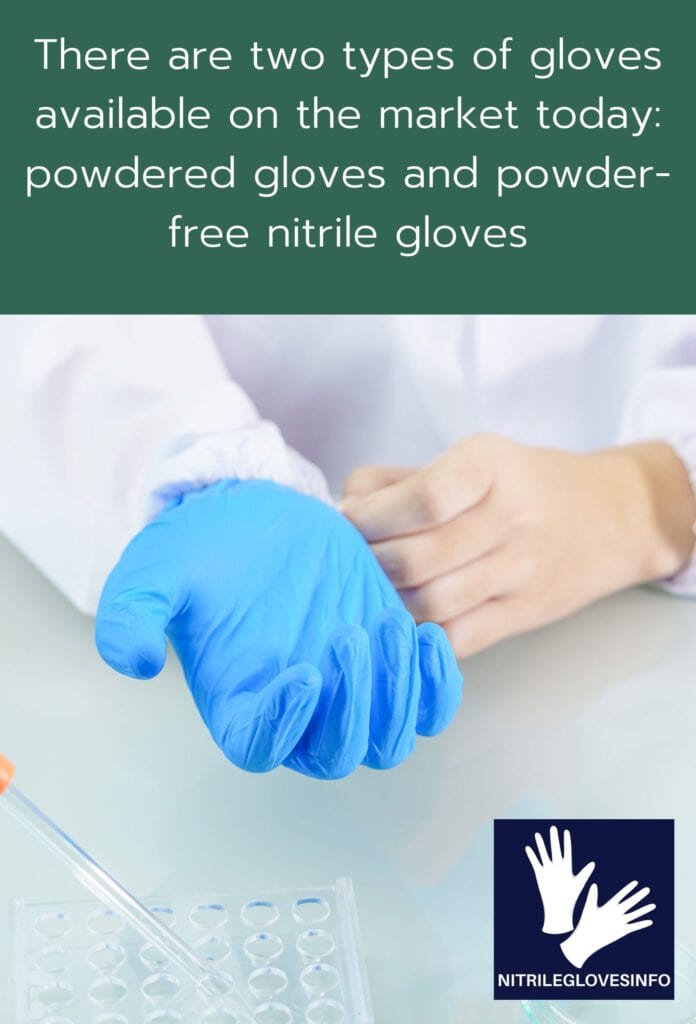When it comes to using gloves, many people are torn between choosing thin or thick nitrile gloves. Which is the right choice for you? In this article, we will discuss the pros and cons of both types of gloves and help you decide which is the best for you.
Table of Contents
- What is the Thickness of Gloves How measure?
- What are nitrile gloves
- Powdered Gloves vs. Powder-Free Nitrile Gloves
- Definition of thin and thick nitrile gloves?
- What is the thickness of Disposable Nitrile Gloves?
- Why Glove Thickness Matters
- Thin vs. Thick Nitrile Gloves
- Product Cost
- Storage Space
- Comfortable feel
- Dexterity and Flexible
- Functional work
- Shipping Cost
- Tolerate pressures
- Degradation
- Durability
- Tear-resistant, Punctured-resistant
- Chemical resistance
- Tactile Sensitivity
- AQL
- Hand Fatigue
- Benefits of thick nitrie gloves
- Benefits of thin nitrie gloves
- Thickness for Various Industries
- Selecting the Right Thickness Nitrile gloves
- Level of barrier protection:
- Dexterity:
- Tactile Sense:
- Tensile strength and durability:
- Comfort and fit:
- Q&A
- Are thicker nitrile gloves better?
- What is the best thickness for nitrile gloves?
- Are 5 mil nitrile gloves strong?
- What is the thickness of disposable gloves?
- What does mil mean on gloves?
- Related Posts
What is the Thickness of Gloves How measure?

You can measure the thickness of something in many different ways. We in America use mils for measuring things. A mil is equal to 0.001 inch (one-thousandth of an inch). The other people in the world use micrometers (microns). A unit of length is equal to one-millionth of a meter.
When measuring the thickness of a glove, it is important to note that depending on which part of the glove is measured, there can be completely different results. For example, a thickness measurement taken from the fingertips will always be a lot thicker than a measurement taken from the palm of the glove.
There are many ways to measure the thickness of nitrile gloves. It depends on which part of the glove is measured. As a general rule, gloves have thicker fingertips than palms. As for the palm of the glove, it is thicker than the wrist area.
In the glove industry, it’s best practice to take measurements from many positions in the glove and to use a mean number of measurements. Some industries measure the gloves by measuring the palm of the glove. While you are out there, put your hands on the gloves and feel for yourself how different the gloves feel.
What are nitrile gloves
Nitrile gloves are the best gloves for people with latex allergies. Nitrile gloves are made of synthetic rubber and do not contain latex, so people with latex allergies can wear them without any worry. They also offer better germ protection than latex gloves, as they do not allow moisture, germs, dangerous chemicals, and other contaminants to enter the glove. Nitrile gloves are also widely used in a variety of industries, such as food preparation, healthcare, and manufacturing. They are also popular for use in safety applications, such as construction and manufacturing.
This pair of gloves are better than latex, PPE and vinyl gloves because nitrile gloves do not require a break-in period and do not cause any skin reactions like latex or vinyl gloves. Nitrile gloves are also easier to get on and off, and are less likely to leave marks or fingerprints on the skin. When it comes to protecting your hands from hazardous materials, nitrile gloves are your best bet.
Compared to latex gloves and vinyl gloves, nitrile gloves are better when it comes to protecting you from chemicals. Nitrile gloves have a higher chemical resistance than latex or vinyl gloves, meaning they will protect you better against dangerous chemicals. They also have a longer lifespan than latex gloves and vinyl gloves, meaning they will last longer and be more cost-effective in the long run.
Powdered Gloves vs. Powder-Free Nitrile Gloves

On the market, there are powdered and powder free nitrile gloves. Powdered nitrile gloves coated in finely beaten cornstarch. It is a natural moisture-absorbing substance, so that it is easier to use the gloves and the wearer’s hands are dry and sweat-free.
Powdered gloves are not always suitable for use. After removing the gloves, the powder remains on people’s hands and other surfaces and causes them to have serious health risks. These risks include airway inflammation, respiratory irritations, and allergic reactions.
It is possible to make powder-free nitrile gloves using different manufacturing processes. These are processes that are used to simulate the properties of cornstarch powder, such as chlorination and polymer coatings. These processes enable the wearers of gloves to put on their gloves more easily than untreated gloves and uncoated gloves. Moreover, they are not affected by the use of cornstarch powder.
Definition of thin and thick nitrile gloves?
Nitrile gloves have many different thicknesses for different job uses. Thinner glove thicknesses are commonly seen below 2 mil. Thin nitrile gloves are best for light duties and may be worn for general jobs, but they should not be used to handle high-risk or hazardous materials. Glove thicknesses greater than 2 mil are commonly referred to as “thick.” Thick nitrile gloves are best for the heaviest duty jobs and for hazardous materials.
Normallly reusable gloves and nitrile mechanics gloves are thick nitrile gloves. Mechanics glove is for the job of mechanic. Reusable glove is for variety tasks. Both protective gloves are generally used for moderate to heavy duty jobs that require best hand protection with good dexterity. They can protect the hand from different substances, such as chemical contamination process and contact of food with oil.
What is the thickness of Disposable Nitrile Gloves?
Disposable examination gloves, including nitrile gloves, latex gloves, and vinyl gloves, generally have a thickness that ranges between 4-8 mils. So thinner disposable nitrile gloves are now available that are below 2 mil thick. There are thicker nitrile gloves available that are between 2-8 mils thick. Reusable or household gloves are thicker than 8 mil.
Why Glove Thickness Matters

Thin nitrile gloves provide the best dexterity and protection against chemical and abrasion hazards, but they are less durable than thick nitrile gloves. For example, thin nitrile gloves can last only a few hours before they start to tear, whereas thick nitrile gloves can last several days or longer. Consider the thickness of gloves used with food-preparation tools such as a food slicer or a bench grinder.
Thin nitrile gloves are the most common type of disposable glove. They are affordable, disposable, and ideal for applications that require frequent glove changes, such as food service or janitorial work. Gloves in the 5-mil to 6-mil range are dependable for a variety of uses, while gloves with 8 mils or above can be rated for heavy-duty use.
Thin vs. Thick Nitrile Gloves
Are you looking for a pair of nitrile exam gloves that are both thin and comfortable? There are advantages and disadvantages to nitrile gloves that range in thickness. This helps you make the right choice when choosing which thin or thick nitrile exam glove is best for your job and protection requirements!
These are a few of the advantages thicker disposable thinner disposable Nitrile Exam Gloves offer: better dexterity, durability, strength glove thickness job needs
Product Cost
Thin gloves are best for dexterity and protection against hazardous materials, but they are less durable than thick gloves. Thick gloves cost more to make because they require more raw materials. Thin gloves are more economical and cost-effective than thicker gloves.
Storage Space
Thin nitrile gloves are generally easier to store, as they require less storage space (and are smaller in packaging) than thicker nitrile gloves. Thin nitrile gloves are also less bulky and easier to store, which is why they are popular among many professionals and industrial users.

This makes them ideal for use in tight spaces, such as in shipping and storage facilities. Whereas thicker nitrile gloves require more material to make them, they also require more space to store or ship.
Comfortable feel
Thin nitrile gloves are often preferred by those who are looking for gloves that offer good grip and comfort. These gloves are also preferred by those who work with harsh substances as they do not tear easily. Additionally, they are less expensive than thick gloves, making them a cost-effective option.
Dexterity and Flexible
Thick nitrile gloves are more tear-resistant than thin ones, but they have less dexterity, meaning thicker gloves provide slightly better protection from cut injuries on a per square inch of coverage basis. A thinner gauge allows for more freedom of movement, but thinner gloves provide less protection. Thin nitrile exam gloves are best for dexterity, especially for food-preparation tasks such as home food preparation or personal hygiene tasks such as washing the hands after an allergic reaction to a chemical glove.
Functional work
Thick nitrile gloves are perfect for tasks that require a bit more force, like cleaning or building. They are also great for people who work with harsh chemicals, as the gloves will provide maximum protection from those chemicals.
On the other hand, thin nitrile gloves are more dexterous and can be used for more delicate work that needs the dexterity of thinner gloves. For example, food service workers who do food handling may encounter food cuts or puncture wounds on a regular basis. For healthcare workers, thin gloves are effective at preventing direct contact with contamination and providing a good grip. For medical professionals, thin nitrile exam gloves help provide a good gripping layer on the hand for the handling of certain medical equipment.
Shipping Cost
They allow for lower freight costs by being thinner and lighter. Thinner gloves use less material and are packed into a smaller package, resulting in a lower delivery cost. On the other hand, thicker nitrile gloves are much heavier and can not be as easily packaged or shipped.
Tolerate pressures
Thick gloves can tolerate higher pressures without tearing, therefore it is better at protecting against puncture injuries. On the other hand, thinner nitrile gloves have less thickness to the glove, therefore they will not withstand as much pressure.
Thin gloves are generally recommended for light work such as cleaning and handling objects. In comparison, thick gloves are better suited for tasks that involve higher pressures or contact with hazardous materials.
Degradation
Nitrile disposable gloves are less likely to break down than latex, but they still need to be replaced eventually. Look for gloves that have at least 6 or 8 millimeters of thickness for maximum protection against tears and chemicals. Testing methods currently used to determine glove degradation may not be effective in assessing chemical resistance.
Durability
Thicker gloves are the best gloves for protection against rips and tears. They offer greater durability and resistance to chemicals, which means you can safely handle even the most hazardous tasks with confidence.
Tear-resistant, Punctured-resistant

When it comes to safety and protection, thicker gloves always trump thinner gloves. Thick and puncture-resistant gloves are the best indicators to choose a pair of disposable gloves. This can be achieved by choosing thick nitrile gloves.
Thicker nitrile gloves offer better good resistance, making them ideal for hazardous or dirty work environments. These chemical-resistant nitrile gloves are also less likely to leave behind any greasy or sticky residues on your hands, which makes them a godsend when it comes to preventing any skin rashes. So, if you need gloves that are both flexible and durable, make sure to go for thicker nitrile gloves!
Chemical resistance
Thick nitrile gloves provide greater protection against chemical resistance than do thin gloves. If you’re looking for chemical resistance in your gloves, thicker gloves are the way to go. However, if you’re only concerned about a slight difference in thickness, 5 to 6 mil gloves are not likely to make a great deal of a difference. However, if you are dealing with chemicals that may cause skin irritation, or if you have a very sensitive skin type, then thicker gloves may be a better option.
Tactile Sensitivity
Thinner gloves require less material, which means they are more affordable and have greater tactile sensitivity. Thinner gloves require less material, meaning that they are also more lightweight and easier to wear. Additionally, they are also more sensitive to the touch, which makes them ideal for tasks such as handling delicate equipment or handling food.
Thinner gloves are the right choice for those who need increased tactile and greater sensitivity, while thicker gloves make more sense if you’re looking to increase durability as protective gloves.
AQL

All medical gloves must meet certain acceptable quality level (AQL) standards in order to prevent pinholes and to ensure that barrier protection levels are sufficiently high. There are many misconceptions about gloves and their performance. Some people believe that thicker gloves result in a lower AQL (average quality level), while others believe that thinner gloves provide better protection. The truth is that glove thickness has no effect on the AQL; all that matters is the material composition of the gloves.
Hand Fatigue
Thicker nitrile gloves offer better protection from harsh chemicals and other environmental hazards, but they are also more difficult to puton and put off. They also provide more hand fatigue, particularly when you have to do a lot of work with them on.
Benefits of thick nitrie gloves
Thicker nitrile gloves provide many benefits, beyond the simple safety factor.
- Tolerate pressures – Thick gloves are able to withstand higher pressures.
- Degradation – It is possible to wear thick gloves, so they are less likely to break.
- Durability – Thick gloves also have greater durability.
- Tensile Strength – Thick gloves are more resilient and can handle much more tensile force.
- Tear-resistant – Thicker nitrile gloves have better tear-resistant properties.
- Punctured-resistant – Thicker nitrile gloves give better puncture-resistant properties.
- Chemical resistance – Thick nitrile gloves offer better abrasion resistance and chemical hazards.
- Functional work – Thick gloves are beneficial for hard work.
Benefits of thin nitrie gloves
Thin nitrile gloves can offer many benefits, many of which go beyond their flexibility.
- Storage Space – Thinner nitriles that are stored in less space are preferred.
- Comfortable feel – Thinner nitrile gloves provide a better, more comfortable feeling.
- Dexterity and Flexible – Thinner nitrile gloves are more dexterous and flexible.
- Shipping Cost – Thinner nitrile has a lower shipping cost.
- Tactile Sensitivity – Thinner gloves also make people more sensitive to being touched.
- Hand Fatigue – Thinner gloves can help reduce hand fatigue.
- Functional work – Thinner gloves are more appropriate for working with light and for completing detailed work.
Thickness for Various Industries
It is common for tensile strength and tactile sensitivity to be required for different industries, so different industries rely on different thicknesses of gloves. Some examples of the kind of person who is doing that:
- 1.5 -2.5 mil: food service worker, tattoo artists.
- 2 – 3.5 mil: dentist, doctor, nurse, electronic worker.
- 4 – 5.5 mil: healthcare workers
- 6 – 8.5 mil: industrial workers
Low on the bottom end of the scale, food service workers and artist need just a basic barrier and another glove to shed quickly. Doctors and electronic workers are in the middle. They are wearing gloves that are thick enough to resist punctures but thin enough to allow for tactile sensitivities. One of the most important things for industrial workers is puncture protection. So they reach for the thickest nitrile gloves that they can.
Selecting the Right Thickness Nitrile gloves

When it comes to choosing the thickness of gloves, it’s not as easy as choosing the highest number. Even the highest thickness levels of nitrile gloves are not always suitable for every application. When choosing gloves made from nitrile, consider these things:
Level of barrier protection:
For hard an dangerous jobs, the thickness to fit the job that you are doing. If you need more protection from tears or if you are handling chemical substances for a long period of time, look for thickness of at least 6 or even 8 mils. They are the most robust defenses that you can get. For very intricate work, a thickness of less than 2 mils is ideal.
Dexterity:
There is also a danger of a thick glove causing you to not be able to grip things securely. Be sure to choose a thickness that is low enough that you can grip items well without compromising the permeability of the products.
Tactile Sense:
In some industrial environments, you may need to be able to grip objects and not necessarily to feel things. In an environment that is medical, you may need a thinner glove so that you can examine patients.
Tensile strength and durability:
When choosing the right nitrile glove thickness, you need to account for both the tensile strength and durability of the gloves. Nitrile gloves are not as durable as other types of gloves, so you need to pick a thicker glove if you need it to withstand a lot of tough use. However, thicker gloves can be more difficult to put on and take off, so make sure you decide which application is best for your needs before you buy.
Comfort and fit:
When it comes to selecting the right thickness nitrile gloves, it is important to consider your comfort and fit. For thin nitrile gloves , the advantage is that they are more flexible and comfortable.
If you’re wondering whether to choose thin or thick nitrile gloves, this article will help you decide. Both have advantages and disadvantages that make them better suited for different jobs. Thin gloves are more dexterous and provide better sensitivity, while thick gloves offer better protection from punctures and cuts. Ultimately, the right choice for you depends on the specific needs of your job.
Q&A
Are thicker nitrile gloves better?
There is no definitive answer to this question as it largely depends on the specific application for which the gloves are being used. That said, thicker nitrile gloves are generally considered to be more durable and resistant to wear and tear. They may also offer better protection against chemicals, oil, and other contaminants. It’s always best to consult with a professional when making a purchase decision like this, as their knowledge of the specific application will be invaluable.
What is the best thickness for nitrile gloves?
There’s no single answer to this question as it depends on a variety of factors, including the type of work you do and the type of nitrile gloves you’re using. That said, here are some general guidelines to help you choose the right nitrile gloves thickness:
- If you’re working with harsh chemicals or corrosive substances, you’ll need thicker gloves to protect your hands.
- For delicate work where you don’t need as much protection, thinner gloves may be sufficient.
- Always test a glove before using it in order to ensure that it’s adequate for the task at hand.
- It’s always a good idea to keep a few extra pairs of nitrile gloves on hand in case of emergencies.
Hopefully, this information will help you choose the best nitrile gloves thickness for your specific needs. If not, feel free to contact us for more assistance!
Are 5 mil nitrile gloves strong?
In general, 5 mil nitrile gloves are a good choice for general work use. They are also rated to protect against certain types of chemical exposures.
What is the thickness of disposable gloves?
Disposable gloves come in a variety of thicknesses, from thin to extra-thick. The thinner gloves are typically used for health-care professionals who need to handle small amounts of material, such as nurses and doctors. The extra-thick gloves are typically used by industrial workers who need to handle more hazardous materials, such as welders and mechanics.
What does mil mean on gloves?
The thickness of a material that is mil is measured in manufacturing. One mil is a small unit, and it is thicker than a thousandth of an inch. To convert mil to inches, divide mil by the number of inches. 1000. Example: 2 mil/1000 = .002 inches.






